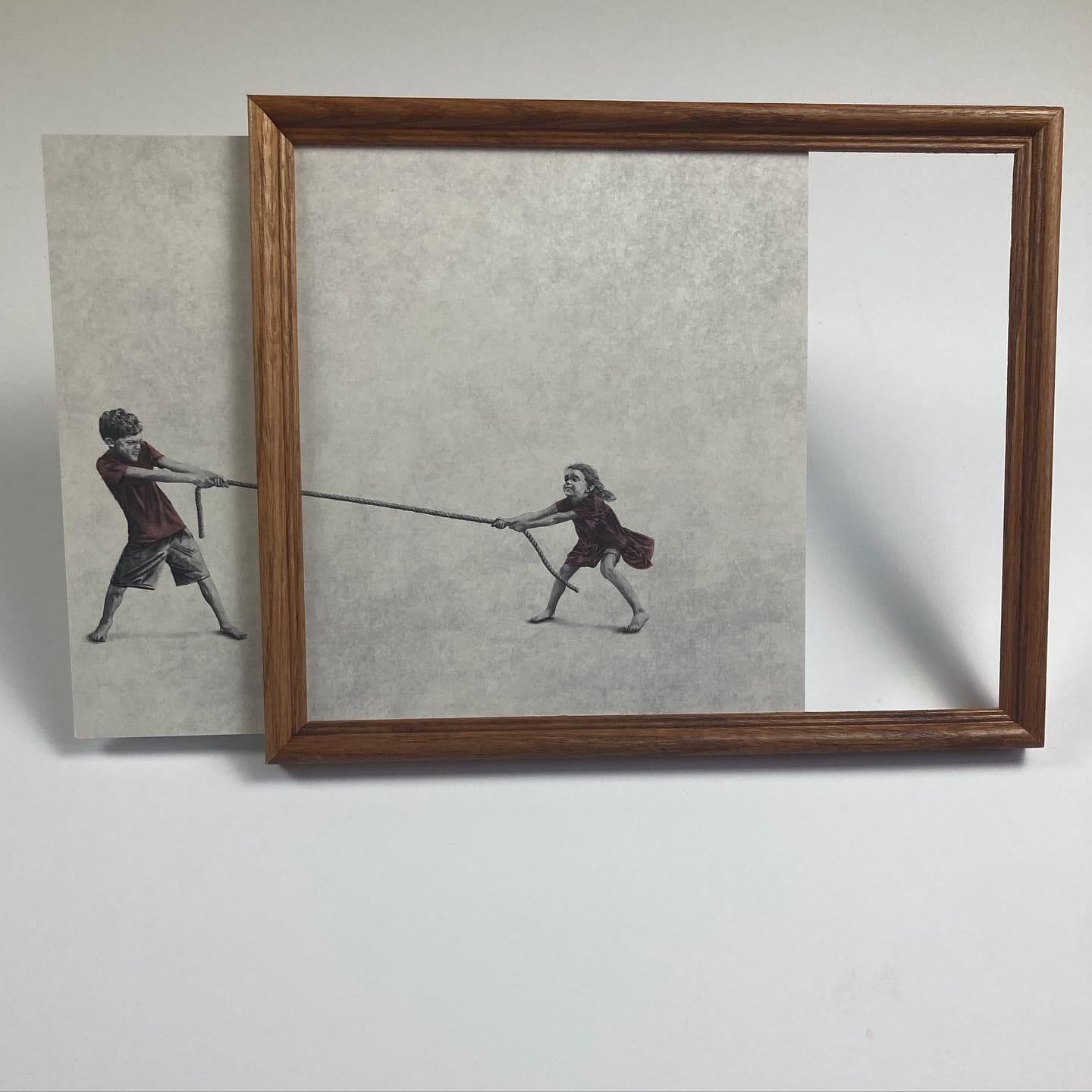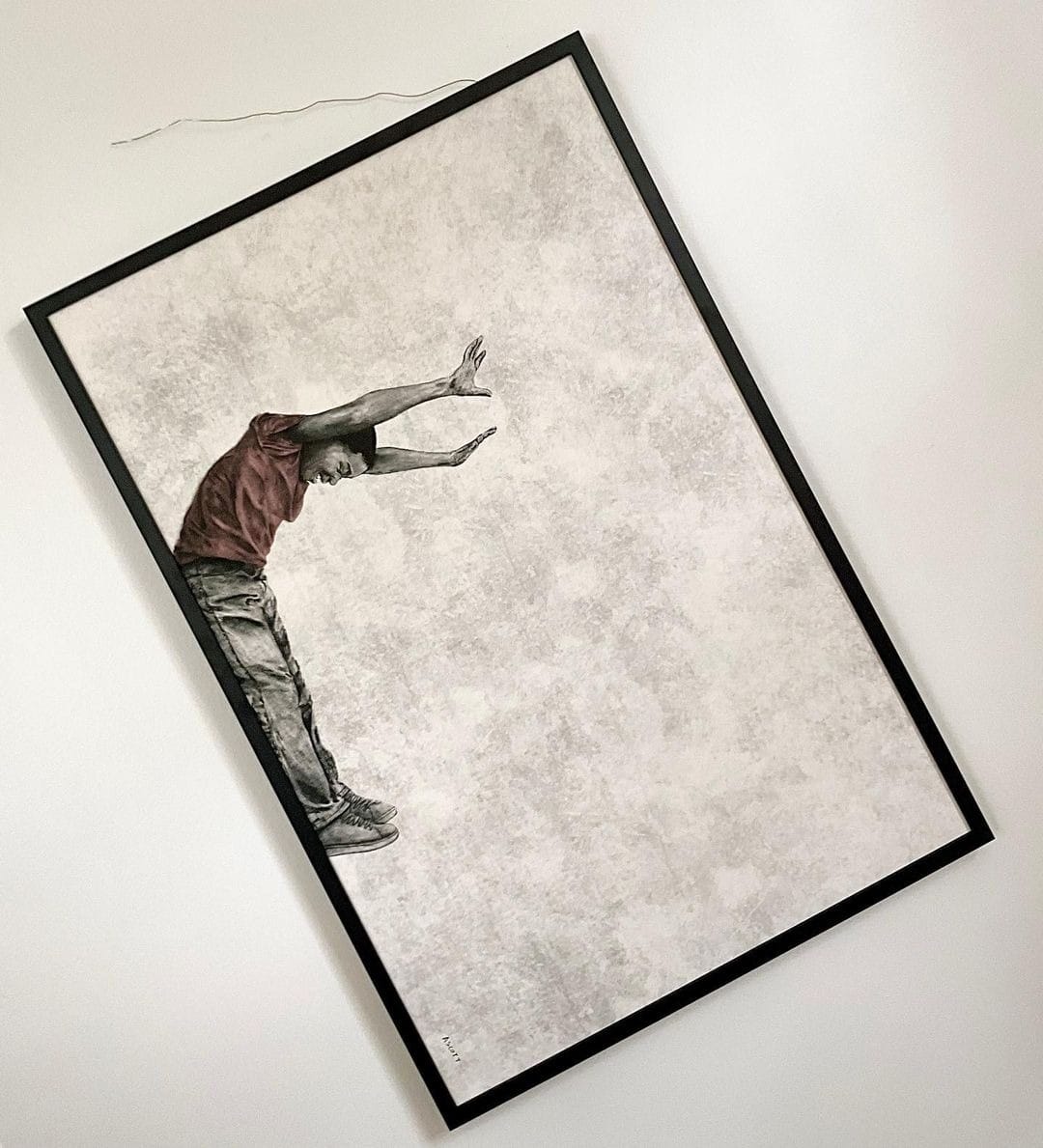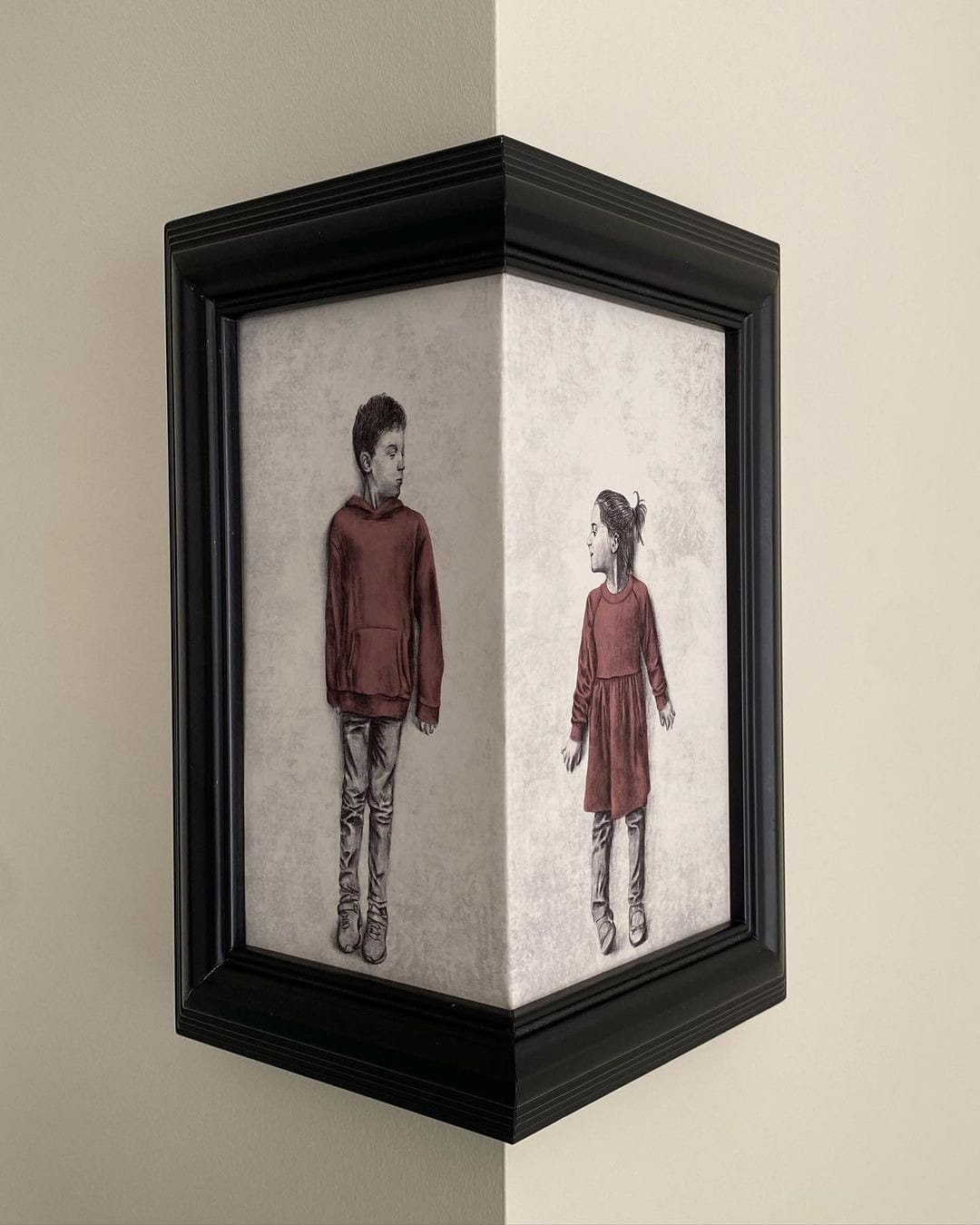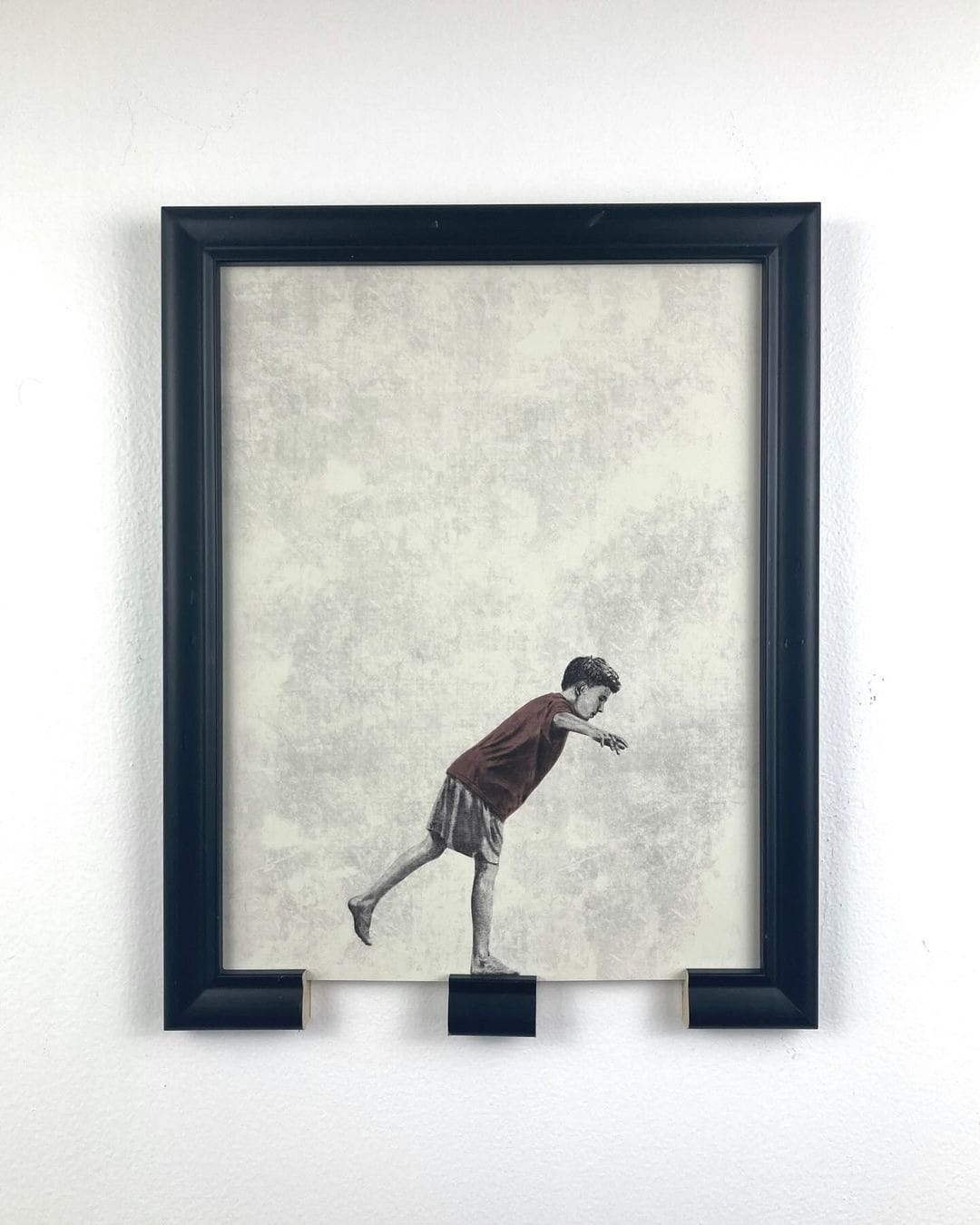By Pia Diamandis
British artist Andrew Scott creates surreal art pieces where he uses his artwork’s frames to break the fourth wall with the world that his characters inhabit. More often than not, his characters are children who are reaching out to a character that lives in another frame. The children Scott has painted come from diverse backgrounds. His pieces allude to the subjects of his work coming from other countries, faiths and more.
By connecting his frames, Scott builds bridges between every child. His pieces show his characters that they don’t have to suffer alone nor experience joy alone. He calls for a peaceful world, where children and adults alike are all able to coexist, build bridges, and get to know each other without harmful prejudices. This is why his work is aligned with the United Nations Sustainable Development Goals of Reduced Inequalities and Peace, Justice, and Strong Institutions.

Aside from building connections with each other, as seen in his piece The Gap and Tug of War, resilience is yet another recurring theme in his pieces. As seen in pieces like Stepping Stone and Off Kilter, Scott talks about resilience by using his frames to give the children he has painted little obstacles. The children are either faced with a slightly crooked frame or sawed away, forcing them to slide down and hop across the frame to move freely. By showing how these children choose to approach these obstacles with play, Scott is reminding his viewers of the need to approach their life’s obstacles with child-like wonder; a state of mind that will allow them to look at things from a different perspective and solve their problems with ease.

Scott’s pieces act as educational tools for children and adults alike, they share messages of tolerance, coexistence, and a light-hearted state of mind when facing everyday situations. Most important of all, these pieces exist in a reality where a study conducted by The United Nations Children’s Fund (UNICEF) has analyzed that children in 22 low-to-middle income countries, and advantaged groups who are not minorities or discriminated against, are twice as likely to have basic reading and writing skills. This has led them to conclude that racism and discrimination remains prevalent and is especially affecting children. In Lao PDR, for example, only 59 percent of the minority Mon-Khmer ethnic group have birth certificates, as opposed to 80 percent of the majority Lao-Tai ethnic group. These circumstances, surrounding the documentation of their birth, will greatly affect their opportunities and rights in life, as the absence of a birth certificate would mean that they will not be able to acquire their national identity cards, have access to health care, banking services, and more.

Andrew Scott’s art, that takes advantage of spaces within and outside of its frames, captivates its audience with a surreal beauty, all while carrying messages of connection, resilience, and inclusivity. Through the literal bridging of characters separated by picture frames, Scott is promoting his vision of the world that is united despite background differences. He highlights the importance of mutual understanding, and a child-like playful perspective to overcome life’s challenges; encouraging people to pave the way to an inclusive and harmonious future for children and adults alike.

Find out more about frame art by Andrew Scott and their other initiatives by checking their Instagram on @andrewscott_art.
